Mina, Muzdalifah, and Arafat: A Complete Pilgrim’s Guide

Gather your spiritual hopes and prepare for a journey through Makkah, Mina, Muzdalifah, and Arafat, the four historical destinations that are the essence of Hajj. As a destination, Mina in Makkah, during pilgrimage, becomes a city of tents, while Muzdalifah provides a night under the stars, and the Arafat plains catch countless prayers offered to the heavens. This guide aims to provide in-depth knowledge about each site's importance, structure, and historical information.
Whether you are planning for Hajj or simply visiting Islam’s most cherished sacred sites, let your journey continue through history, devotion, and supplication.
Mina

Mina in Makkah is a narrow valley about 8 kilometers east of Masjid al-Haram, nestled between mountains. Mina is important during Hajj, on the 8th, 11th, 12th, and 13th of Dhul Hijjah, when many pilgrims camp here as part of the pilgrimage rites.
Mina is most famous for the Jamarat, the three stone pillars signifying where Prophet Ibrahim (AS) is believed to have rejected Shaytan symbolically.
What Is the Meaning Behind the Name “Mina”?

The name “Mina” has its origin from the Arabic root ma-na-ya, meaning “to test” or “to trial.” Mina is also related to Tamanna and Manna, meaning “to wish” or “to wish for.”
Mina is illustrated in an Islamic context by the trial of Prophet Ibrahim. Allah SWT ordered Ibrahim to sacrifice his son Ismail. Ibrahim did not hesitate to submit to the will of Allah SWT. Just before Ibrahim sacrificed Ismail, Allah SWT sent a ram to take Ismail’s place, awarding Ibrahim with steadfast obedience. The event carved the identity of Mina as the “valley of trial and triumph.”
The word Mina can also mean “to flow,” referring to the mass animal sacrifices carried out there during the Prophet Muhammad’s Farewell Pilgrimage. In memory of that event, pilgrims continue the Sunnah of sacrificing their animal at Mina during Eid al-Adha.
How Big Is Mina and Where Is It Located?
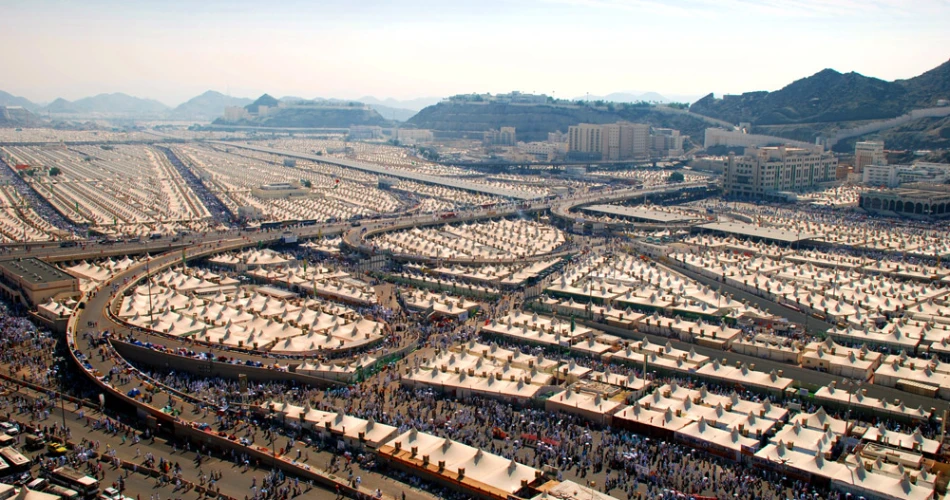
Mina is located in a valley approximately 400 meters (1,300 feet) above sea level. Four boundaries define Mina's location:
- The northern boundary is the 4th Ring Road
- The western boundary is Makkah city
- The southern boundary is the Al-Jamaih district
- The eastern boundary is Muzdalifah
Mina is about 16.8 kilometers from central Makkah to Muzdalifah.
What Is the Significance of Mina During the Hajj?
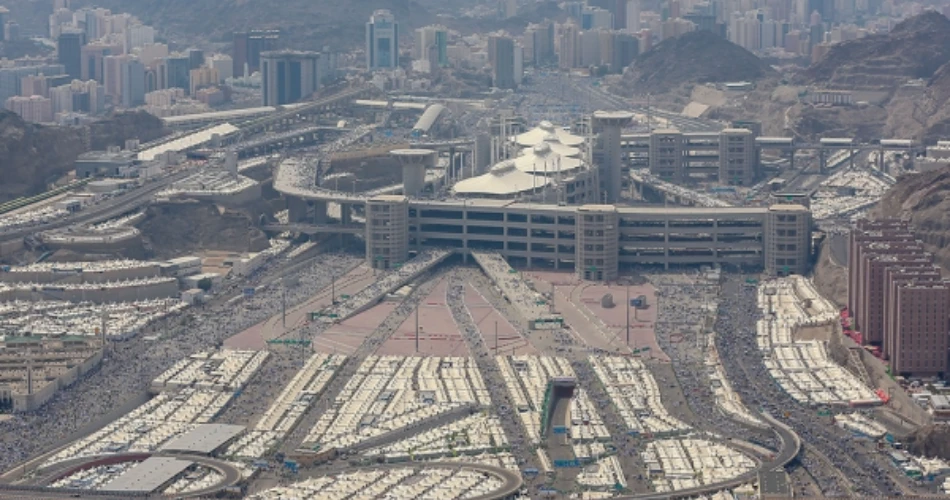
Mina has immense spiritual value during Hajj, where pilgrims perform several important rituals. Pilgrims are required to camp in Mina on the 8th, 11th, and 12th of Dhul Hijjah, with the option to stay on the 13th as well.
Pilgrims camp in Mina after performing Tawaf at Masjid al-Haram, where a sea of white tents spring up serving as shelter. When in Mina, worshippers become absorbed in devotion — obligatory and voluntary prayers, Quranic recitation, sincere du'as, and consistent remembrance of Allah through Dhikr.
At dawn on the 9th of Dhul Hijjah, pilgrims leave Mina and head to the plains of Arafat, where pilgrims fulfil the centerpiece of Hajj, the standing at Arafat.
What Happens at Mina?
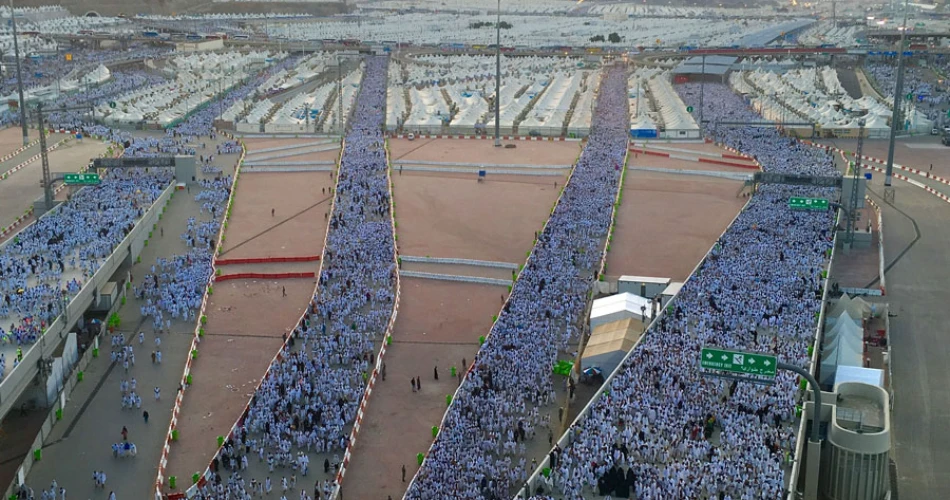
On the third day of Hajj, the pilgrims travel to Mina before sunrise to perform Rami al-Jamarat, the ritual of the "stoning of the devil." They throw pebbles at three stone pillars called the Jamarat that symbolize the points at which Satan challenged Prophet Ibrahim.
Pilgrims gather these pebbles earlier, commonly during their stay in Muzdalifah. By throwing stones, pilgrims are declaring their rejection of evil vices and their absolute submission to Allah SWT's will.
After completing the stoning ritual, the pilgrims perform the ritual animal sacrifice following the tradition of Ibrahim, who was willing to sacrifice his son. The meat from the sacrifice is distributed to the poor to uphold the value of generosity and compassion as a vital aspect of the pilgrimage experience.
The Jamarat in Mina

In the ritual of Hajj, the Rami is the act of throwing stones at three stone structures called Jamarat:
- Jamarah al-Sughra (small)
- Jamarah al-Wusta (middle)
- Jamarah al-Aqaba (large)
The first attempt of Satan signifies his effort to confuse Prophet Ibrahim (AS), the second represents his effort to sway Hajer (RA), and the third signifies Satan's attempt to mislead Prophet Ismail (AS).
In each case, Prophet Ibrahim (AS) threw seven stones and rejected the whispers of Satan, maintaining his will in servitude to Allah. Astonishingly, throwing stones during Hajj is a powerful reenactment of this rejection of evil and a symbol of the struggle that Muslims endure to combat doubt and temptation.
This gesture is established in the Qur'an, which reads:
“And remember Allah during [specific] numbered days. Then whoever hastens [his departure] in two days – there is no sin upon him, and whoever delays [until the third] – there is no sin upon him – for him who fears Allah. And fear Allah and know that unto Him you will be gathered.” [2:203]
Muzdalifah
What Is Muzdalifah?
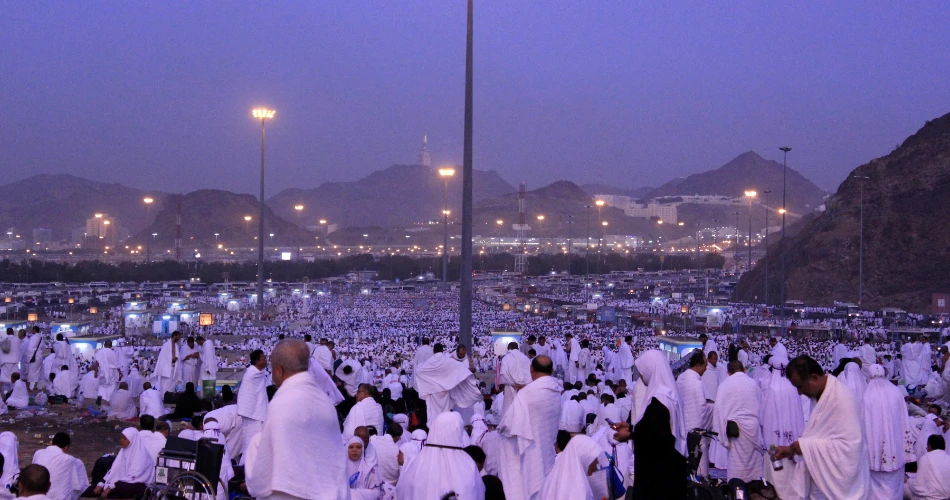
Muzdalifah is a significant location in the Hajj pilgrimage, found between Arafat and Mina in the Hejaz region near Mecca.
This open plain is where pilgrims arrive after sunset on the 9th of Dhul Hijjah as soon as they leave Arafat. It is the place where pilgrims pray Maghrib and Isha, combining them, and then sleep under the night sky.
An aspect of Muzdalifah is that pilgrims collect pebbles for the symbolic stoning of the Jamarat in Mina. While there may be challenges to travel to Muzdalifah, unlike previous generations, pilgrims now have access to modern transport methods such as Umrah taxis to ease travel.
Significance of Muzdalifah

Muzdalifah is spiritually significant during Hajj, being the location where the Prophet Muhammad PBUH and his companions rested after sundown on the 9th of Dhul Hijjah.
Pilgrims congregate here and pray the Maghrib and Isha prayers in unison and rest in the open air overnight, engaging in reflection and worship.
In the morning, pilgrims collect the pebbles they will use for the stoning ritual in Mina, an important Sunnah of the pilgrimage.
The Prophet Muhammad (PBUH) Stayed at Muzdalifah

After sunset of the day of Arafah for the Farewell Pilgrimage (Hajj al-Wida), the Prophet Muhammad proceeded towards Muzdalifah. Upon arrival, he performed ablution and continued to recite the Talbiyah.
Then he prayed the Maghrib prayer, followed by the Isha prayer in the shortened (Qasr) format, praying two Rakats only. He prayed Maghrib and Isha separately, each with its own Iqama, and did not pray any Sunnah or Nafl prayers in between or after.
In a narration by Abdullah ibn Umar, it is reported:
“The Prophet Muhammad (PBUH) offered the Maghrib and Isha prayers together at Jam (i.e., al-Muzdalifah) with a separate Iqama for each and did not offer any optional prayer between them or after each of them.” [Sahih al-Bukhari]
Muzdalifah has tremendous historical and spiritual significance in the Hajj pilgrimage because of its link to the Prophet Muhammad (PBUH), who stood there with his companions after leaving Arafat to rest.
Each year, about 2.5 million pilgrims spend the night at Muzdalifah on the bare ground without tents. This humbling night reflects humility, togetherness, and seeking Allah's mercy.
This practice echoes that of the Prophet by reinforcing the spiritual nature of the pilgrimage.
Rituals Implemented at Muzdalifah
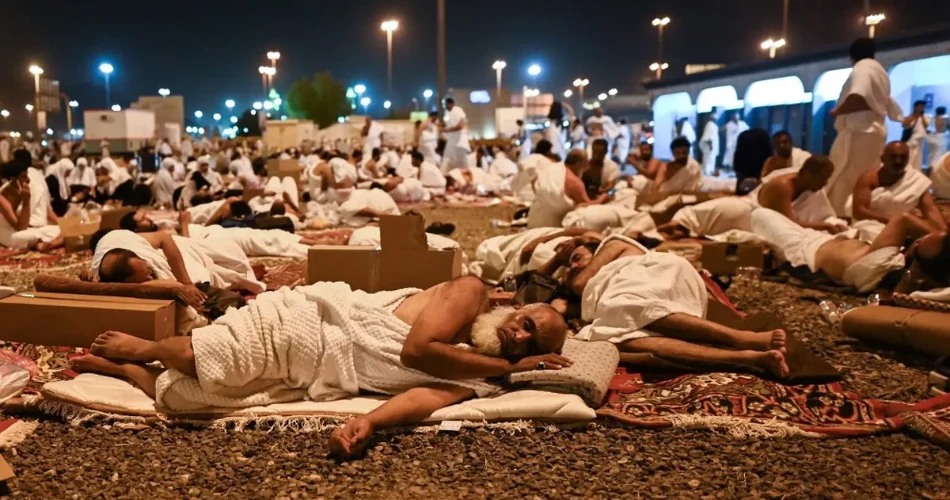
Muzdalifah marks the second major point in the ritual of Hajj, at which specific rituals take place according to the Sunnah of the Prophet Muhammad.
The following is a breakdown of the rituals performed by pilgrims at this site:
The Arrival at Muzdalifah
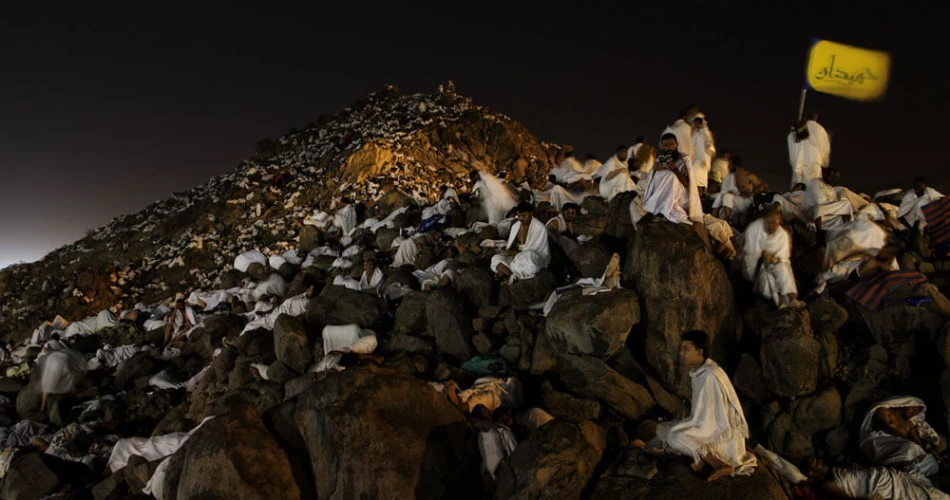
All pilgrims leave Arafat after sunset on the 9th of Dhul Hijjah to collectively head to Muzdalifah. The group emphasizes the discipline and social structure of the Hajj pilgrimage.
Maghrib and Isha Prayers (Combined
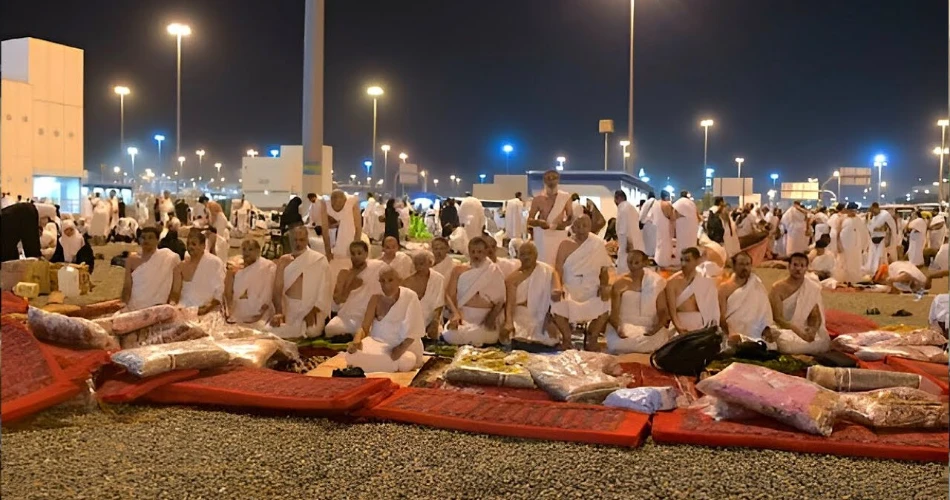
When the pilgrims arrive at Muzdalifah, they pray Maghrib and Isha prayers back-to-back. Each prayer must be preceded by its own Iqama. For the Isha prayer, the two rakats are shortened, following the Sunnah established by the Prophet, with no Sunnah prayers afterwards or between obligatory prayers.
Staying Overnight at Muzdalifah

Pilgrims then spend the night sleeping outside in Muzdalifah, which indicates equality and humility. They remember Allah, reflect, and sincerely repent, building their relationship with Allah.
Collecting Pebbles for Jamarat

Before leaving for Mina, pilgrims collect 49 or 70 pebbles—depending on their Hajj plan—to use in the stoning of the pillars at Mina. Pilgrims use the pebbles as a symbolic act, indicating their rejection of temptation and reaffirming their faith.
The Fajr Prayer and Leaving at Daw

Pilgrims offer the Fajr prayer and continue in dhikr (remembrance) and du'a (supplication) until just before sunrise. After that, they begin their journey to Mina to undertake the next rite: the stone-throwing rite at Jamarat.
Arafat
Mount Arafat is a small hill located in the Arafat plain southeast of Masjid al-Haram in Makkah. It is historically significant as the location where Prophet Muhammad delivered his last sermon during his Farewell Pilgrimage.
On the 9th of Dhul Hijjah (according to the lunar calendar), this location becomes the spiritual center of Hajj, as pilgrims gather here in deep devotion to perform Wuquf (Standing at Arafat).
This act represents complete submission and supplication to Allah: to pray, ask forgiveness, and reflect. This day and place are special as they provide the opportunity for full forgiveness and reflection.
In recent years, accessibility to Arafat has improved, with modern transportation, including Umrah taxis, facilitating the trip.
Geographical Location of Mount Arafat

Mount Arafat is located in the plains of Arafah, approximately 20 kilometers southeast of the holy city of Makkah. It lies between Makkah and Taif and is about:
- 22 kilometers from Makkah city center
- 10 kilometers from Mina
- 6 kilometers from Muzdalifah
This makes it an important point during the Hajj pilgrimage.
Significance of Mount Arafat
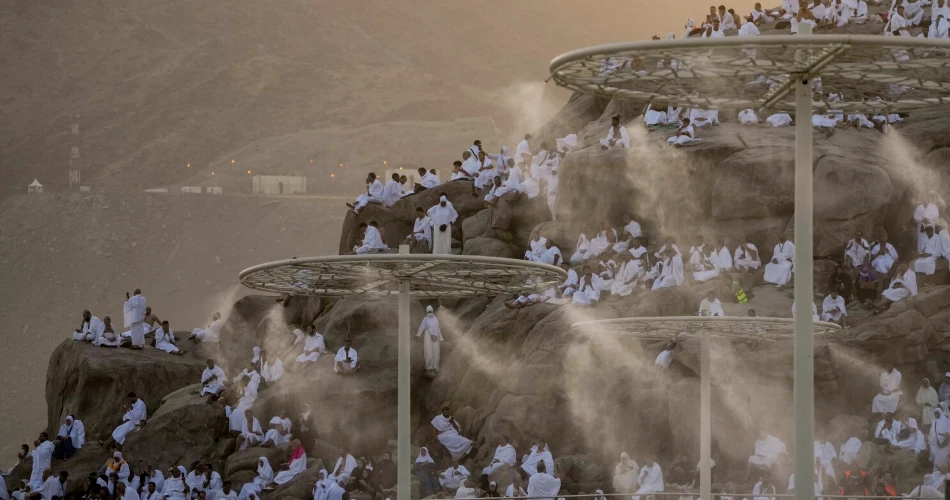
Mount Arafat is well-known in Islamic history as the site where Prophet Muhammad ﷺ delivered his Farewell Sermon on his last pilgrimage.
In this sermon, he established Islamic values such as justice, racial equality, and respect for life.
The site also offers a moment of consolation prayer, as the Prophet pleaded for the forgiveness of his Ummah.
Every year on the 9th of Dhul Hijjah, pilgrims flock to this sacred plain for a day of supplication and prayer for all believers.
Standing at Mount Arafat
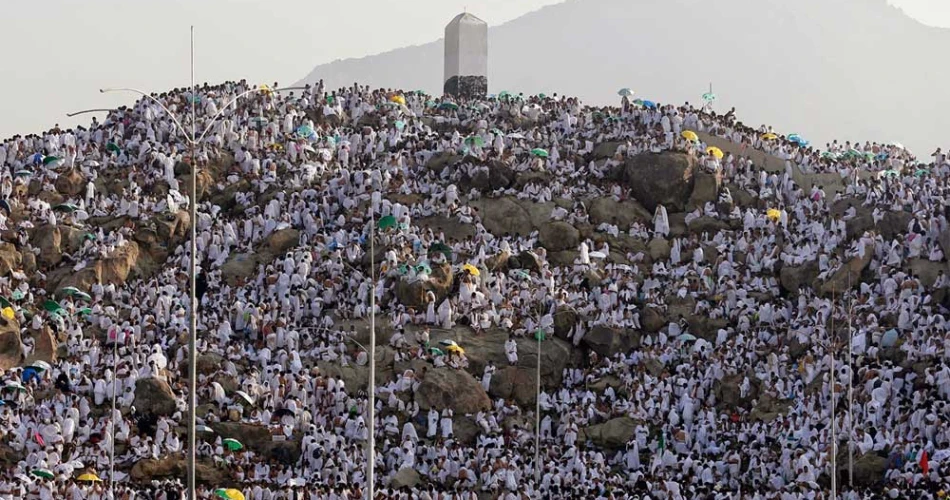
On the 9th of Dhul Hijjah, pilgrims gather at Arafat to conduct the obligatory rite of Wuquf.
During this, pilgrims perform Dhuhr and Asr prayers together, shortened and combined, facing the Qibla.
They then spend the rest of the day in sincere supplication until sunset.
According to a hadith, this is one of the most significant moments of mercy, where Allah tells the angels:
“My slaves have come to Me, rough and disheveled, coming from every distant valley hoping for My mercy, so if your sins were equivalent to the amount of a grain of sand or a drop of rain or like the foam on the sea, I will forgive them. So go forth, My slaves! Having forgiveness and for what or whom you have interceded for.” [Tabarani]
Du'a on the Day of Arafah

On the 9th of Dhul Hijjah during the holy assembly at Arafat, the Prophet Muhammad (PBUH) said the greatest du'a is:
“The best invocation on the day of Arafah, and the best of all the invocations I ever offered or other holy Prophets before me ever offered is:
‘There is no god but Allah: He is Unique; He has no partner, the whole universe is for Him and Him is the praise, and He has power over all things.’” [Tirmidhi]
While this declaration holds immense virtue on the Day of Arafah, it carries even greater significance for those standing on the plains of Arafat in worship during Hajj.




